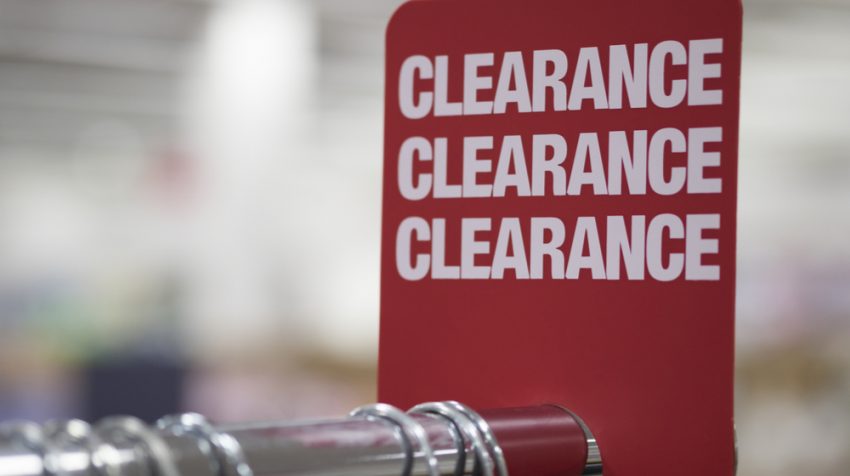
The year 2017 is almost over. Are you still carrying unsold merchandise in your store?
As the post-holiday frenzy dies down, January is a slow month for most retail stores. On top of the holiday bill hangover consumers are experiencing, bad weather or resolutions to stop spending money will often keep shoppers away.
But if those unsold products are gathering dust on your shelves or taking up space in your stockroom, they’re not bringing in profits for your business. It’s time for a clearance sale!
The word “clearance” is overused these days when many retail chains seem to offer weekly clearance deals. However, when clearance is done sparingly, it can be a highly effective marketing strategy. Clearance can attract not only your regular customers, but bargain-hunters who might not otherwise stop into your store. For instance, many people who don’t normally shop at Nordstrom Rack hit the discount store regularly for its seasonal clearance sales.
Clearance Sale Tips
Here’s how to make your clearance sale a success.
1. Time it right. Quarterly seasonal clearance makes sense for most retail businesses. You want to sell products at the tail end of the season, while they’re more attractive to customers. (For example, it’s easier to move parkas in January than April.) If your products aren’t particularly seasonal, a clearance every six months may work. Just don’t let too much unsold stock build up.
2. Choose your wares. Using your point-of-sale/inventory management system, identify the products that are least profitable and slowest moving so you can pull them for clearance.
3. Create your clearance display. Don’t hide your clearance in the back of the store. You can often tempt shoppers to come into your store by putting clearance items relatively close to the door. Limit the total space you devote to clearance. It’s OK if the products are a little crowded. You don’t want so much clearance that your retailer looks like a thrift store or as if you’re going out of business. Try putting some small clearance items near the checkout line. You’d be surprised how many people can’t resist this.
4. Price it right. Using actual prices rather than percentage-off signs typically attracts more bargain hunters. No math is required to see that “$10 each” is a good deal. Try sectioning products by price — a $10 display, a $20 display, a $5 and under display, etc.
5. Kick it off with a bang. Ever been to a “clearance” sale that offers 15 percent off? (Eye roll.) That’s not nearly enough to tempt true bargain hunters. Start with 50 percent off — possibly even deeper discounts depending on your industry, your competition and what types of discounts you’ve offered throughout the year.
6. Market online and off. Market your clearance through email, online advertising, social media, on your website and/or direct mail. Greet customers at your entrance and let them know about your clearance specials. Point out the sale racks or shelves and maybe even suggest an item. Giving shoppers a bag or basket to shop with can entice them to buy more, too.
7. Sweeten the deal. If your product doesn’t sell on 50 percent clearance, don’t hang on to it. Your primary goal is to move the items out of inventory, so increase the discount every day of the clearance — 50 percent the first day, 60 percent the second day, etc. — to motivate buyers.
8. Let it go. What if at the end of your clearance, you’ve still got stuff left? Don’t try to sell it next season. One shoe store I shop at has an annual clearance sale where at least half the inventory is shoes that didn’t sell at the last sale! Know when to cut your losses.
9. Act quickly. If a product doesn’t sell, have a plan for disposing of it at the end of the sale. You can try liquidators, remarketers or donating the items to charity for a tax write-off.
10. Connect with new customers. Make a special effort to get new customers on your mailing list. Ask them to sign up for your email newsletters or loyalty reward program. For those who are bargain oriented, asking, “Would you like to know about our next clearance sale in advance so you can get a better selection?” is generally all it takes to get them to sign up.
Happy selling!
[“Source-smallbiztrends”]




